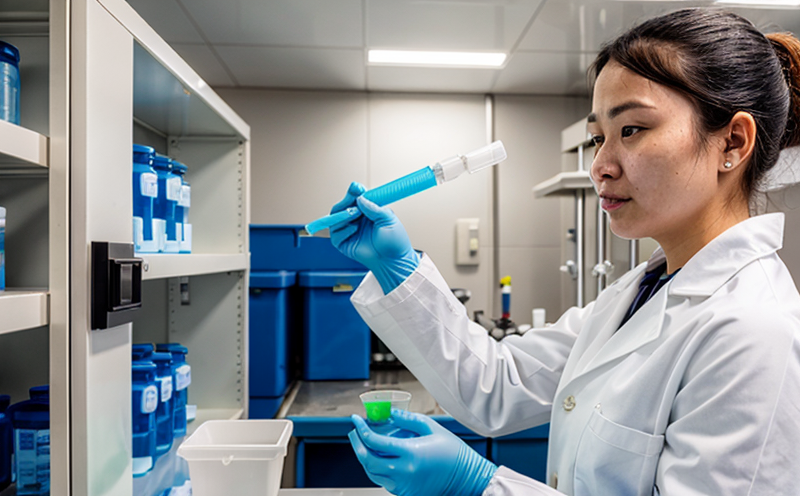USP ATP Bioluminescence Microbial Testing
The USP ATP (Adenosine Triphosphate) Bioluminescence Microbial Testing is a critical quality assurance tool used in the pharmaceutical industry to ensure that products meet stringent microbial contamination limits. This test measures the amount of ATP present on surfaces or samples, which correlates directly with the level of microbial activity. The ATP content serves as an indirect measure for viable microorganisms, allowing laboratories and manufacturers to assess cleanliness before product release.
The testing process involves swabbing a surface or extracting a sample from a container, followed by placing it into a lysis buffer designed to break open cells and release ATP. Luminescence is then measured using bioluminescent enzymes that produce light proportional to the amount of ATP present. The resulting measurement provides an accurate representation of microbial presence on the tested surface.
This method offers several advantages over traditional culture-based methods, including speed and sensitivity. It can detect even small amounts of contamination early in production cycles, helping prevent costly batch rejections or product recalls. Additionally, because ATP is present not only in viable cells but also dead ones, it provides a comprehensive overview of all microbial activity rather than just live bacteria.
The USP ATP Bioluminescence Test is particularly important for ensuring compliance with United States Pharmacopeia (USP) Chapter 712, which specifies the use of this technique as part of environmental monitoring programs. By adhering to these standards, companies can demonstrate their commitment to maintaining high levels of hygiene throughout manufacturing processes.
In summary, USP ATP Bioluminescence Microbial Testing plays a crucial role in safeguarding public health by minimizing risks associated with microbial contamination in pharmaceutical products. Its rapid turnaround time and ability to detect both viable and non-viable microorganisms make it an indispensable tool for quality assurance professionals working within the pharma sector.
Why It Matters
Microbial contamination can have serious implications for patient safety, especially in sterile drug products. Even trace amounts of pathogenic organisms could lead to severe infections if ingested or injected into patients who are immunocompromised due to underlying health conditions like cancer treatments or organ transplants.
Pharmaceutical manufacturers must adhere strictly to Good Manufacturing Practices (GMP) guidelines set forth by regulatory bodies such as the FDA and EMA. These regulations emphasize the importance of preventing microbial contamination at every stage of production, from raw materials sourcing through final packaging stages.
The USP ATP Bioluminescence Test helps meet these stringent requirements by providing reliable data on microbial levels in real-time. Early detection allows for corrective actions to be taken promptly, reducing instances where contaminated batches need to be discarded or recalled after they reach the market.
Moreover, compliance with international standards like USP Chapter 712 enhances a company’s reputation among customers and stakeholders alike. It demonstrates a strong commitment to maintaining product integrity and ensuring that all products meet exacting quality benchmarks before being released into circulation.
Applied Standards
| Standard Reference | Description |
|---|---|
| USP Chapter 712 | This chapter outlines the principles and practices for conducting environmental monitoring programs, including the use of ATP bioluminescence testing as part of those programs. |
| ISO 14698-3:2015 | An international standard that specifies procedures and criteria for performing bioburden monitoring in cleanrooms, which could benefit from ATP testing to ensure cleanliness standards are met. |
| ASTM E2784-19 | This American Society for Testing Materials standard provides guidance on selecting appropriate methods for measuring total viable counts in pharmaceutical environments, which can complement ATP tests where needed. |
Why Choose This Test
The USP ATP Bioluminescence Microbial Testing offers numerous benefits that make it an attractive choice for pharmaceutical manufacturers:
- Speed and Efficiency: Results are available within minutes, allowing immediate decisions to be made about production batches.
- High Sensitivity: Capable of detecting very low levels of microbial contamination that might otherwise go undetected by other methods.
- Simplicity: Easy-to-use kits and automated equipment reduce the need for extensive training or specialized expertise to perform the test successfully.
- Comprehensive Coverage: Measures both viable and non-viable microorganisms, giving a complete picture of microbial activity on surfaces.
- Cost-Effective: By identifying contamination early in the process, it helps avoid costly rejections or recalls later down the line.
- Regulatory Compliance: Aligns perfectly with current regulatory requirements set forth by various authorities worldwide.
Incorporating this testing into your quality assurance protocols ensures that you remain at the forefront of industry best practices, fostering trust among consumers and stakeholders alike.





